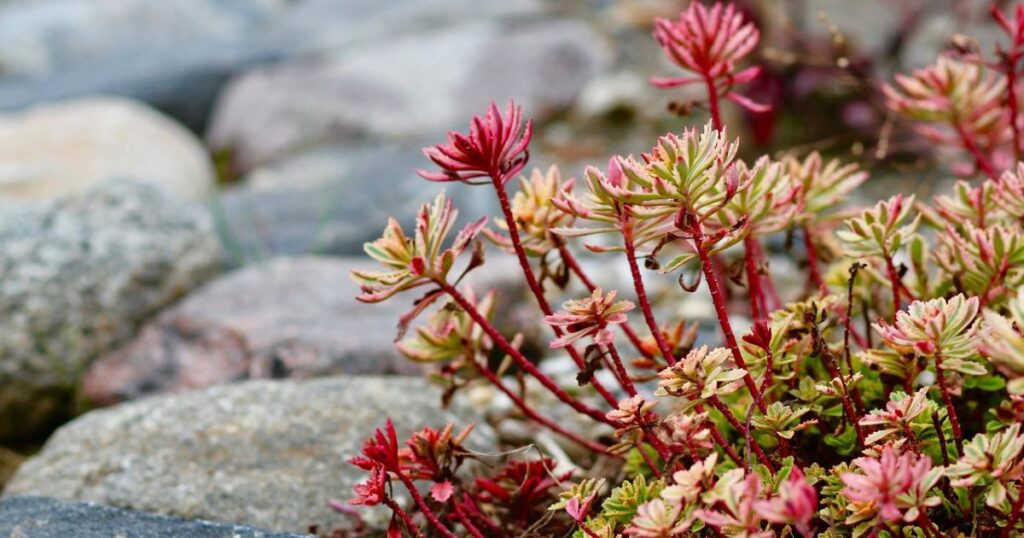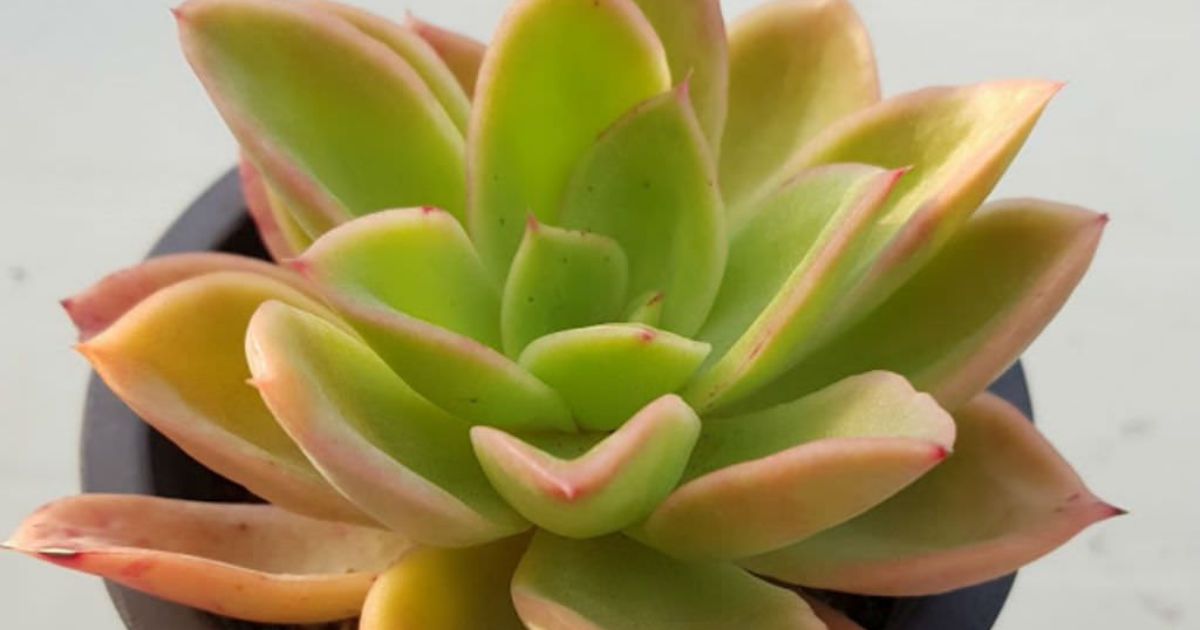A succulent may become wrinkly due to underwatering, as it stores water in its leaves. This dehydration causes the leaves to lose their plumpness and appear wrinkled. To revive your succulent, water it thoroughly and ensure it receives proper sunlight. Avoid overwatering, which can lead to root rot and further damage.
Is your succulent looking less than its best? If you’ve ever asked yourself, ‘Why is my succulent wrinkly?’ It’s time to uncover the simple solutions that will bring your succulent back to its vibrant, healthy self. Discover the secrets to succulent care and get ready to revive your beloved plants with just a little TLC.
A succulent becomes wrinkly when it lacks sufficient water and its leaves lose moisture, causing them to appear shriveled. This condition typically indicates dehydration and can be remedied by providing the succulent with adequate watering and proper sunlight. Overwatering should be avoided to prevent root rot and further damage.
Understanding the Basics

Before we delve into the reasons for your succulent’s wrinkles, let’s get a better understanding of what succulents are and how they typically function. Succulents are a diverse group of plants that have adapted to arid conditions by storing water in their leaves, stems, or roots. Their ability to retain water allows them to thrive in environments with infrequent rainfall.
How Succulents Store Water
Succulents have specialized cells in their leaves, known as parenchyma cells, which store water. These cells are responsible for the fleshy appearance of succulent leaves. When a succulent is adequately hydrated, these cells are turgid, giving the plant a plump and healthy look.
The Role of Photosynthesis
Succulents use a unique form of photosynthesis called Crassulacean Acid Metabolism (CAM) photosynthesis, which minimizes water loss. This adaptation helps them survive in water-scarce environments but can also make them prone to dehydration.
Common Reasons for a Wrinkly Succulent
Now, let’s explore the most common reasons why your succulents may become wrinkly.
Underwatering
If you’ve ever wondered, my succulent’s leaves falling off the answer might be closely tied to their current state. Succulents with wrinkled, shriveled leaves and a wilted appearance are often suffering from underwatering, which is a leading cause of succulent wrinkles. When a succulent doesn’t receive enough water, it begins to use up its water reserves stored in the leaves. As a result, the leaves lose their plumpness, leading to a wrinkled and shriveled appearance.
| Key Point | Description |
| Succulent Basics | Succulents store water in their leaves and use CAM photosynthesis. |
| Underwatering | Wrinkled leaves result from insufficient watering; address with proper hydration. |
| Overwatering | Overwatering can lead to root rot and soft leaves; allow soil to dry between watering. |
| Lack of Sunlight | Insufficient light causes stretched growth and wrinkles; provide bright, indirect sunlight. |
| Incorrect Pot Size | Cramped pots hinder root health; report in a slightly larger, well-draining container. |
| Poor Soil Quality | Soil that retains water causes slow growth and yellowing; use a well-draining mix. |
| Pest Infestations | Pests like mealybugs damage leaves; address infestations with appropriate treatment. |
| Reviving Your Succulent | Steps to revive a wrinkly succulent include assessing root health, repotting, and proper watering and sunlight. |
| Preventing Future Wrinkles | Tips to prevent future issues include choosing the right pot and soil, watering wisely, regular inspection, and repotting as needed. |
Solution
Water your succulent thoroughly, ensuring water reaches the root zone.
Allow excess water to drain from the pot to prevent waterlogged soil, which can lead to root rot.
Adjust the watering schedule to the specific needs of your succulent species and environmental conditions.
Overwatering
Symptoms
Soft, mushy, and translucent leaves, along with a wrinkled appearance.
While underwatering is a common issue, overwatering can also cause succulent wrinkles. Excess moisture can lead to root rot, making it difficult for the succulent to absorb water and nutrients properly.
Solution
Allow the soil to dry out between waterings. Use a well-draining potting mix to prevent waterlogged roots. Ensure the pot has drainage holes to prevent water from accumulating at the bottom.
Lack of Adequate Sunlight
Symptoms Elongated, stretched stems, and wrinkled leaves.
Succulents require adequate sunlight to perform photosynthesis and maintain their health. If your succulent is not receiving enough light, it may exhibit elongated growth, which can result in wrinkled leaves and a weakened appearance.
Solution
Rotate the pot periodically to ensure even sunlight exposure.
Consider using grow lights for indoor succulents if natural light is insufficient.
Incorrect Pot Size
overcrowded or root-bound appearance.
Choosing the right pot size is essential for succulent health. If the pot is too small, the roots may become cramped, making it challenging for the succulent to access water and nutrients.
Solution
Repot your succulent into a slightly larger container with good drainage.
Gently loosen the roots when transplanting to encourage healthy growth.
Poor Soil Quality
Symptoms
Slow growth, yellowing leaves, and wrinkled appearance.
Succulents require well-draining soil to prevent water retention and root rot. If your succulent is in soil that doesn’t allow excess water to escape, it can lead to moisture-related problems.
Solution
Use a well-draining succulent or cactus potting mix or amend regular potting soil with perlite or sand. Ensure the potting mix allows water to flow through freely.
Pest Infestations
Damage to leaves, discoloration, and a stressed appearance.
Pests like mealybugs, aphids, and scale insects can infest succulents, causing damage and stress. As a result, the succulent may develop wrinkles and other signs of distress.
Solution
Inspect your succulent regularly for signs of pests. Treat infestations with appropriate pest control methods, such as neem oil or insecticidal soap.
Reviving Your Wrinkly Succulent
Now that you understand the potential reasons for your succulent’s wrinkles, it’s time to take action to revive it. Follow these steps to bring your succulent back to its healthy and vibrant state.
Assess the Root Health
Gently remove the succulent from its pot to examine the roots. Trim any black or mushy roots if you suspect root rot. Allow the roots to air dry for a day before repotting.
Repot Your Succulent
Choose a well-draining pot that is slightly larger than the current one. Add a layer of well-draining succulent or cactus potting mix to the bottom of the new pot. Place your succulent in the new pot and fill the gaps with more potting mix.
Watering
Water your succulent thoroughly but allow the excess water to drain from the pot. Adjust your watering schedule based on the specific requirements of your succulent and environmental conditions.
Sunlight
Place your succulent in a location with bright, indirect sunlight. Rotate the pot occasionally to ensure even sunlight exposure.
Monitor and Maintain
Keep an eye on your succulent’s progress and adjust care as needed. Avoid overwatering or underwatering, and maintain a consistent care routine.
Preventing Future Wrinkles
Preventing your succulent from becoming wrinkly in the future is just as important as reviving it. To maintain the health and beauty of your succulent, consider these tips.
Choose the Right Pot and Soil
Select a well-draining pot with drainage holes. Use a high-quality succulent potting mix or amend regular potting soil with perlite or sand.
Water Wisely
Water your succulents when the top inch of soil is dry.
Ensure proper drainage to prevent overwatering.
Provide Adequate Sunlight
Place your succulent in a spot with bright, indirect sunlight. Adjust the light exposure according to the needs of your specific succulent species.
Regular Inspection
Check your succulents regularly for signs of pests or disease. Address any issues promptly to prevent stress and damage.
Repot When Necessary
Repot your succulent when it outgrows its current container or becomes root-bound. Give the roots room to grow and access nutrients. By understanding the reasons for a wrinkly succulent and taking
FAQ’s
Why is my succulent getting soft and wrinkly?
Your succulent may be getting soft and wrinkly due to underwatering or overwatering, which can cause the leaves to lose moisture and become dehydrated or damaged.
What does an overwatered succulent look like?
An overwatered succulent often appears with soft, mushy leaves, discolored or translucent patches, and may exhibit signs of root rot, such as a foul odor or dark, rotting roots.
Is my succulent too wet or too dry?
To determine if your succulent is too wet or too dry, check the soil moisture by inserting your finger about an inch into the soil.
Conclusion
Understanding why your succulents may become wrinkly is crucial for its well-being. Whether it’s due to underwatering, overwatering, insufficient sunlight, incorrect pot size, poor soil quality, or pest infestations, recognizing the issue is the first step to remedy it. By taking appropriate measures, such as adjusting your watering schedule, providing adequate sunlight, and maintaining proper soil and pot conditions, you can help your succulent regain its plump and healthy appearance.










